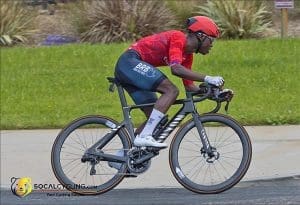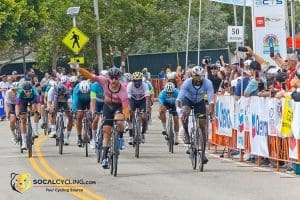Embarking on the journey of preparing for a major cycling race involves more than just physical endurance. Understanding the terrain of the route, selecting the best gear, and creating a customized workout program can significantly influence your performance. Additionally, recognizing how the race route affects sports betting odds unveils another layer of complexities to consider.
Navigating the challenge: understanding the terrain
The first step in preparation is to thoroughly understand the race route’s terrain. Different types of routes pose unique challenges that impact a cyclist’s strategy, strength, and overall performance. The main types of routes include flat courses, hilly terrains, mountainous regions, and mixed routes, each requiring specific attention to detail.
Factors influencing the route
Several factors within these routes profoundly affect a rider’s approach:
- Elevation Changes: Steep ascents and descents demand robust strength and technical skills, affecting both the speed and endurance required.
- Road Conditions: Smooth asphalt versus rough gravel can dictate the choice of wheel rims and tire pressure adjustments, impacting overall comfort and control.
- Weather Patterns: Wind resistance, rainfall, or extreme temperatures call for adaptive strategies and the right attire to maintain optimal performance levels.
Gear up: the essential cycling equipment checklist
Succeeding in a major cycling race is heavily dependent on having the right gear. Investing in high-quality equipment tailored to the race conditions will enhance performance and comfort during the ride.
Choosing the right road bike
Your road bike must be suited to the terrain you’ll encounter. A lightweight frame benefits climbs, whereas aero frames reduce wind resistance on flat stretches. Assess the following components critically:
- Frame Material
- Wheel Rims
- Group Set (Gears and Brakes)
Cycling clothing and accessories
Proper attire improves aerodynamics and protects against weather conditions. Essentials include:
- Helmet
- Cycling Jersey and Shorts
- Gloves and Shoe Covers
- Visibility Gear (Lights and Reflective Materials)
Useful tools and gadgets
Having the right tools can be critical when making adjustments or repairs mid-race. Consider stocking up on:
- Barrel Adjuster for precise derailer tuning
- Multi-Tool Kit
- Portable Pump
- Extra Training Wheels
Route influence: how it affects sports betting odds
The intricacies of different race routes not only influence riders’ performances but also factor into sports betting Ireland odds. Bookmakers analyze several elements of the route alongside rider capabilities to set their odds.
Elevation and terrain
Routes with significant elevation changes generally favor cyclists known for their climbing abilities, altering betting odds to reflect these athletes as potential winners. Alternatively, flatter routes might have competitive sprinters tipped for victory.
Historical performance data
Sports bettors often look at past performances of riders on similar terrains. A strong history on hilly or mountainous courses can sway odds, providing insights into potential team tactics and individual strengths.
External conditions
Weather predictions play a vital role in setting odds. Cyclists accustomed to racing in rainy or windy conditions may see improved odds compared to those who perform better under calm, sunny skies. Therefore, examining forecasts becomes a critical aspect of evaluating outcomes.
Building a training regimen tailored to the route
Developing a workout program tailored to the race route’s specific demands is essential for maximizing performance. This involves incorporating various training methods such as interval training, strength conditioning, and endurance building.
Interval training
Intervals are key for enhancing both speed and stamina. Mimicking the uphill sprints and recovery periods found in hilly races through dedicated sessions will benefit your race-day strategy.
A sample interval session might include:
- 5 minutes warm-up at moderate pace
- 30 seconds high-intensity sprint followed by 90 seconds recovery
- Repeat the cycle for a total of 20 minutes
- Cool down for 5 minutes
Strength conditioning
Building muscle strength, particularly in the legs and core, can help manage challenging terrains and sustain longer durations. Incorporate activities like weight lifting, squats, and lunges outside of cycling.
A typical weekly strength routine might incorporate:
- Leg Press
- Squats
- Deadlifts
- Core Exercises (Planks, Russian Twists)
Simulate race conditions
Mimicking the actual race day scenarios helps acclimatize your body:
- Create rides that integrate similar elevation profiles and distances.
- Rehearse fueling and hydrating strategies under race-like conditions.
- Implement rest days strategically to prevent burnout.
Endurance building
Long-distance rides help improve cardiovascular health and build sustainable energy reserves. They replicate the experience of prolonged effort needed in extensive races.
Include one long ride per week, gradually increasing distance and difficulty over time. For example:
- Week 1 – 50 km at a steady pace
- Week 2 – 60 km including some hills
- Week 3 – 70 km mixing flat and hilly terrains
As you prepare for your big race, ensure that your training, gear, and strategic planning align thoughtfully with the specifics of your chosen route.
The mental game: psychological strategies for a race day
The mental component of racing, often underestimated, can be the key differentiator in top performances. Visualizations, mantras, and relaxation techniques keep racers grounded.
Goal setting
Establish clear objectives to maintain focus and motivation:
- Short-term Goals: Set milestones throughout your race preparation journey.
- Long-term Goals: Aim for personal records or podium finishes.
Visualization techniques
Mental imagery familiarizes you with race challenges:
- Visualize crossing important segments of the race successfully.
- Anticipate potential issues and mentally devise solutions.
Relaxation methods
Employing relaxation techniques prevents anxiety and preserves energy:
- Controlled Breathing: Practice deep breathing exercises during stressful moments.
- Progressive Muscle Relaxation: Engage sequential muscle tension and relaxation practices.
Use of mantras
Mantras provide powerful affirmations to stay motivated:
- Choose short, positive phrases that resonate with your goals.
- Repeat them consistently, particularly in challenging moments.
Nutrition and hydration: fueling for peak performance
Proper nutrition and hydration strategies are paramount, ensuring a steady supply of energy and preventing fatigue.
Pre-race diet
Adopt a balanced dietary regimen weeks leading up to the event:
- Consume carbohydrate-rich meals to stock glycogen reserves.
- Integrate lean proteins and healthy fats for balanced nourishment.
- Avoid processed sugars and fried foods which hamper energy levels.
Hydration strategies
Maintaining optimal hydration is essential:
- Drink ample fluids daily, prioritizing water and electrolyte beverages.
- Monitor urine color as an indicator of hydration status.
- Increase fluid intake if training in hotter climates or at higher intensities.
Race day fuel
A strategic approach to race day nutrition enhances performance:
- Before the Race: Eat a light meal rich in complex carbohydrates 2-3 hours before the start.
- During the Race: Utilize energy gels, bars, and sports drinks at regular intervals.
- After the Race: Replenish with a mix of carbs and proteins to aid recovery.
No products found.


















